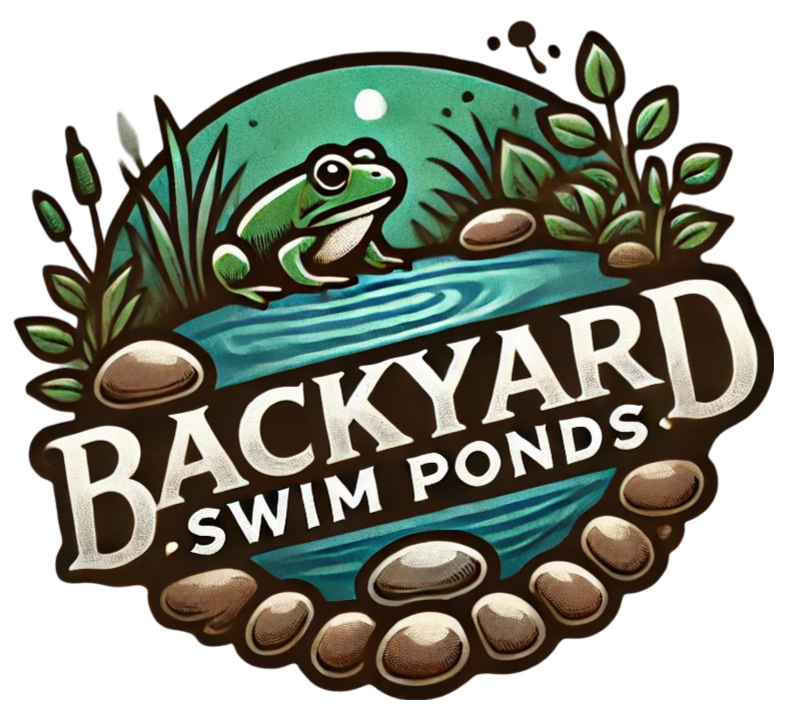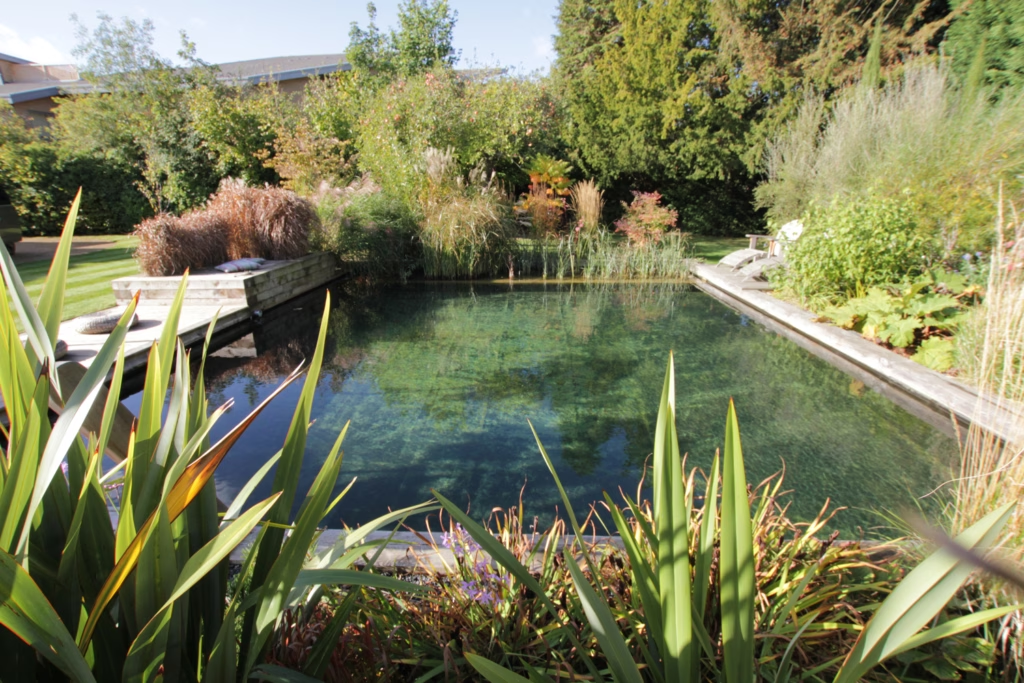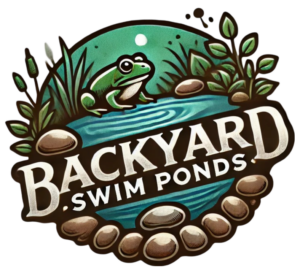Creating a natural swimming pond is an enjoyable and rewarding project that not only enhances your backyard but also promotes a sustainable way of enjoying the outdoors. Unlike traditional swimming pools that rely on chemical treatments, natural ponds use eco-friendly filtration methods, providing a healthier swim experience. This guide will take you through each step of building your DIY natural swimming pond, highlighting essential tips and best practices along the way.
Transform Your Backyard into an Eco-Friendly Paradise
Natural swimming ponds, often referred to as eco-pools, provide a refreshing alternative to conventional swimming pools. These ponds use a filtration system that relies on natural processes and aquatic plants to keep the water clean without harsh chemicals.
Building a natural swimming pond allows you to create a serene environment that supports local wildlife and enhances biodiversity. It’s not just about having a place to swim; it’s also about fostering a small ecosystem right in your backyard. You’ll enjoy soaking up the beauty of nature while simultaneously contributing positively to your local ecology.
Studies show that being around water can reduce stress and enhance overall well-being. A natural swimming pond creates an inviting atmosphere for relaxation and outdoor enjoyment, making it a favorite gathering spot for family and friends.
This natural swimming pond showcases a blend of aquatic plants and tranquility, illustrating its beauty and the joy of natural swimming (Source: Clear Water Revival)
Planning Your Dream Pond: A Step-by-Step Approach
Before diving into the construction, effective planning will set the foundation for your project. Start by evaluating your available space and selecting a suitable location that receives adequate sunlight. Proper sunlight is essential for your plants and will help maintain pleasant water temperatures.
Next, consider the shape of your pond. Natural ponds typically feature curves rather than sharp angles, which helps create a more organic appearance. Be sure to designate zones in your pond: a swimming area and a filtration zone, which should ideally make up at least 50% of the total surface area. These zones work harmoniously to provide effective water filtration and a balanced ecosystem.
Take your time during this planning phase; dedicate 1-2 weeks to sketching your pond layout and sourcing materials. Research local suppliers for plants, liners, and filtering equipment so you’re ready when construction begins.
According to Jennifer Cassels, President of The Blissful Place, “Water lilies have large leaves that can cover wide surface areas, thus reducing algae growth through shading the water.” By carefully selecting plants according to your design, you can enhance both the ecological functionality and aesthetic appeal of your pond.

This schematic diagram illustrates the cross-section design of a natural swimming pond, showcasing its various sections for swimming and filtration (Source: GB Bio)
From Ground Up: Excavation and Structural Work
Now that you have a clear plan, it’s time to start construction. Begin by excavating the area for your pond. The swimming section should typically be 5 to 7 feet deep. This depth provides not only a comfortable swimming experience but also aids in thermal regulation of the water.
As you dig, ensure you create sloping sides with a recommended ratio of 1 foot of vertical drop to every 3 feet of horizontal distance. This creates a more natural look while also preventing erosion. Additionally, shape the planted filtration area with varying depths—between 2 and 18 inches—to accommodate a diverse range of aquatic plants.
You’ll want to protect your pond liner during excavation, so be sure to install an underlayment that will guard against rocks or sharp items that may cause leaks. This phase, including excavation and structural work, may take about 1 to 2 weeks but is crucial for setting up a stable foundation for your pond.
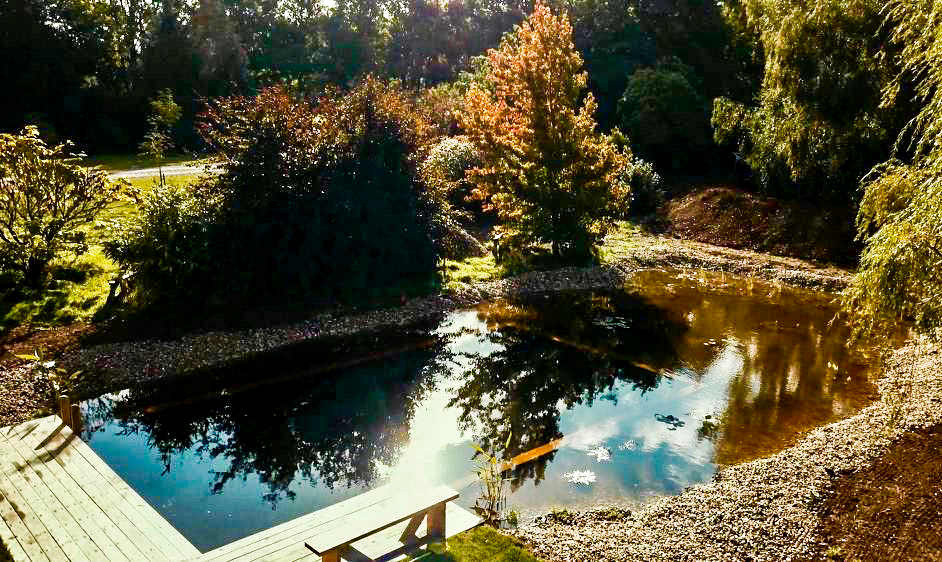
This image shows the transition from an excavated site into a natural swimming pond, highlighting the importance of proper construction (Source: My Home Extension)
Setting Up the Heart of Your Pond: Filtration Systems Explained
The filtration system is the heart of your natural swimming pond. Unlike chemically treated pools, these ponds maintain their water quality through a combination of biological and physical filtration methods.
Start by installing perforated pipes that facilitate circulation between the swimming area and the filtration zone. This circulation is crucial for distributing nutrients evenly and supporting beneficial bacteria that help break down waste materials.
You might also want to consider a bubble-powered filtration system, similar to those created by natural swimming pool expert David Pagan Butler. This setup utilizes air stones connected to an air compressor to generate bubbles that circulate the water, enhancing filtration efficiency.
Allow yourself about 3 to 5 days to set up this filtration system. Establishing proper circulation early on will save you potential complications in the long run.

This illustration of a natural pond filtration system highlights essential components and water flow, key to maintaining water quality (Source: Fluidra)
Bring Your Pond to Life: Substrate, Plants, and Biodiversity
Once your filtration system is up and running, it’s time to add life to your pond with aquatic plants. Selecting the right species is essential for both aesthetics and water quality maintenance.
Choose native plants based on your climate zone. For example, if you live in temperate regions, water lilies, yellow flag irises, and hornwort are excellent choices that provide shade and filtration while attracting local wildlife. In warmer areas, opt for pickerel weed and water hyacinth, known for their beautiful blooms and ability to absorb excess nutrients.
To prepare the substrate, start with a layer of gravel over the filtration pipes, then cover it with geotextile fabric to prevent sediment mixing. Finally, add a layer of sand or fine gravel for plant roots. This planting phase typically takes about a week, and you should aim to cover at least 50% of the pond’s surface with plants for optimal filtration and algae control.

This infographic showcases various aquatic plants suitable for natural swimming ponds, emphasizing their filtration roles (Source: Angi)
Fill It Up and Make a Splash: The Building Process Continues
With your plants securely in place, it’s time to fill your pond with water. Rainwater is the preferred choice as it helps avoid chemicals that might upset your pond’s developing ecosystem.
Once filled, testing your water quality is essential. Monitor parameters such as pH, ammonia, and nitrate levels to ensure everything is balanced. Address initial maintenance tasks by gently adjusting plants and confirming the filtration system’s effectiveness.
It’s wise to give your pond some time to establish its ecosystem—typically several weeks—before taking your first swim. This period allows beneficial bacteria to flourish, which is crucial for maintaining water clarity.
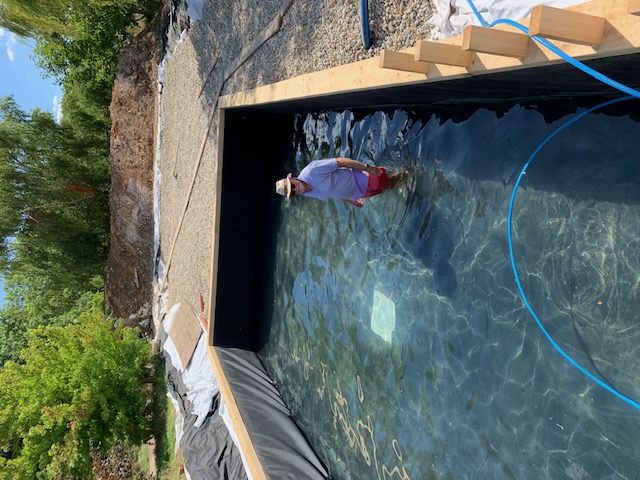
This image captures the process of filling a natural swimming pond, emphasizing this crucial step (Source: My Home Extension)
Diving In: Finishing Touches and Safe Entry Points
Now that your pond is filled and the ecosystem is settling in, it’s time for the finishing touches. Establishing safe access points is vital for interaction with the water. Consider incorporating steps, beach entrances, or natural pathways that lead to the water.
Landscaping around the pond is not just about aesthetics. Choose native and drought-resistant plants that blend nicely with the environment, enhancing visual appeal while reducing ongoing maintenance needs.
Finally, add features such as decking, a jetty, or seating areas that encourage family gatherings and enhance the overall experience of your newly created natural swimming pond.
:strip_icc()/DeanRiddle_Lobel_JuneGarden-1-1_preview-ceed82770a7f496197804d4b3db47f63.jpg)
This beautifully landscaped swimming pond area illustrates how to enhance space functionality and aesthetics (Source: Better Homes & Gardens)
Maintaining Your Eco Oasis: Best Practices for Water Quality
Maintaining water quality in your natural swimming pond is an ongoing effort that requires regular attention. Start with weekly skimming to remove debris such as leaves and insects, and check the regeneration zone monthly to clear out any dead plant matter.
Proper management of your plants is equally important. Ensure a balance of aquatic plant types, aiming for around 60% of the water surface covered by floating plants. Regular trimming of overgrown plants and prompt removal of decayed material can significantly improve water clarity.
Monitoring water quality is another critical maintenance activity. Regular testing—about an hour each week—will help you keep track of pH levels, ammonia, and nitrates. Remember that seasonal changes will impact your maintenance schedule: perform thorough cleanings in spring to prepare for algae growth, and clear fallen leaves in autumn.
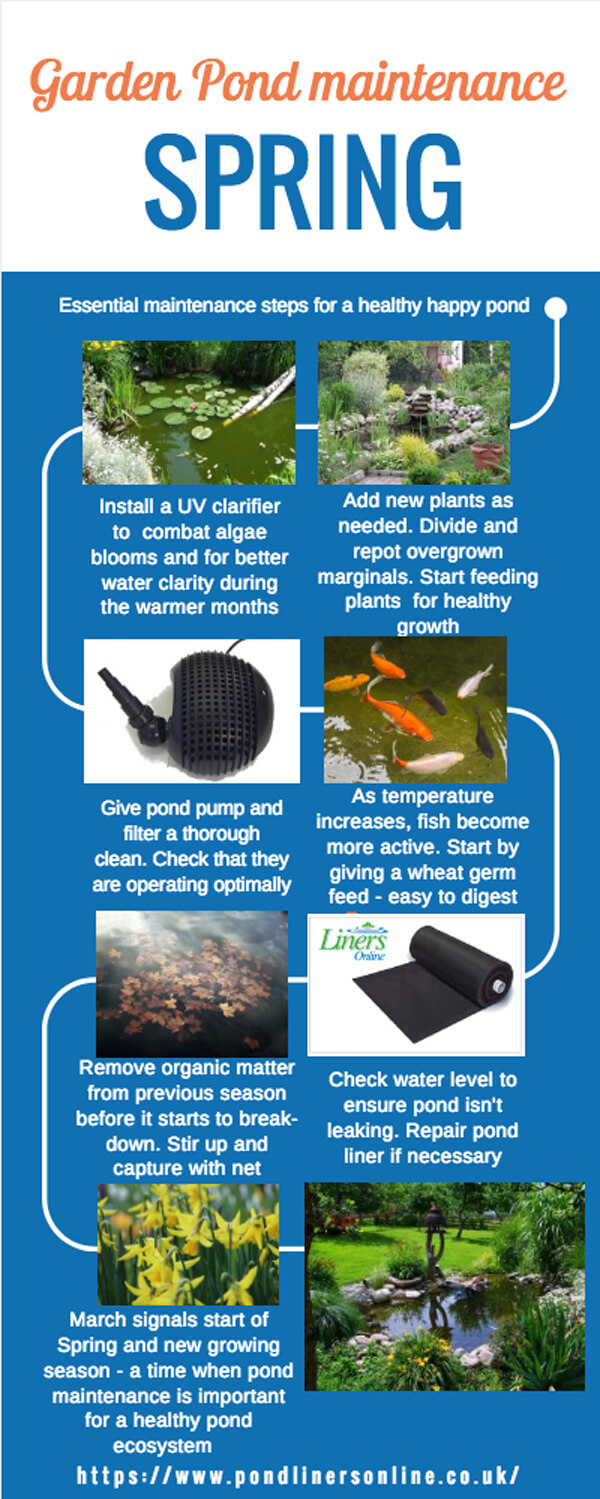
This infographic provides a handy guide to seasonal maintenance tasks for natural ponds, helping you care for your ecological paradise (Source: Pond Liners Online)
Common Pitfalls on Your Pond Journey and How to Avoid Them
While creating a natural swimming pond is a fulfilling endeavor, it comes with potential pitfalls that can complicate your project. One common issue is misjudging local regulations. Always consult with your local planning office to understand the necessary permits and requirements.
Another risk is skimping on essential plants or not implementing adequate filtration systems. This can lead to water quality issues. Make sure you don’t compromise on plant density; a well-balanced ecosystem will fare better in the long run.
Lastly, knowing when to seek professional help is crucial. If you feel overwhelmed or uncertain about any part of this process, do not hesitate to consult with experts or hire assistance. Consulting professionals can ultimately save you time and effort in avoiding long-term complications.

This infographic outlines common mistakes made during pool installation, providing essential guidance for DIY enthusiasts (Source: Solda Pools)
Celebrate Your Creation: The Beauty and Benefits of Natural Swimming Ponds
Congratulations on constructing your DIY natural swimming pond! As you reflect on your hard work, consider the significant environmental benefits it brings. Natural swimming ponds support local wildlife, contributing to biodiversity and strengthening community ecology.
The personal benefits are equally valuable. Your natural swimming pond offers unique spaces for relaxation, recreation, and creating memories with loved ones. By connecting with nature, you not only enhance your outdoor experience but also improve your overall well-being.
As you share your journey with others, encourage them to explore eco-friendly projects as well. Building a natural pond not only beautifies your backyard but also fuels a commitment to living sustainably and harmoniously with nature.
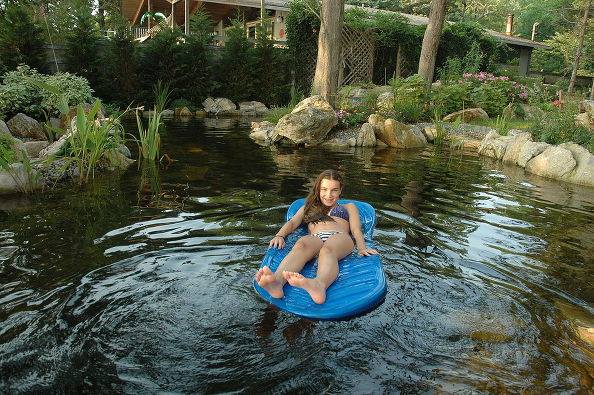
This joyful scene of families enjoying a natural swimming pond captures the essence of community and connection with nature (Source: Deck and Patio)
Building your own natural swimming pond is not just an exciting project; it’s an investment in creating a harmonious environment that blends leisure with ecological integrity. By following this guide, you’ll be well-equipped to construct a sustainable oasis that enhances both your backyard and the environment. Embrace the process, cherish your creation, and enjoy the numerous benefits that come with a beautiful, thriving natural swimming pond!
